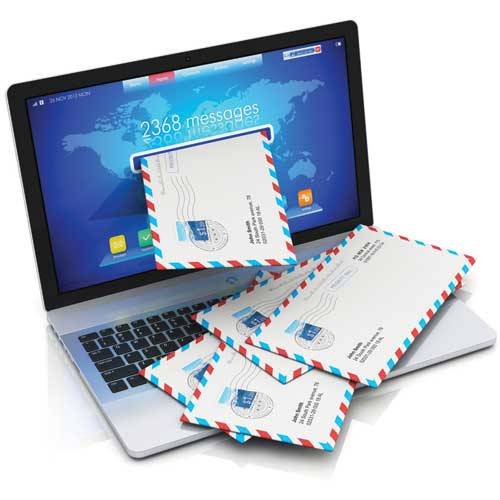
Keeping emails short and simple is a better strategy than providing lengthy information with many links.
Marketers should make love not spam
Posted April 01, 2013 | By Emily Mobbs • Former Editor
Email campaigns are a cost-effective way to reach a large number of customers. But, as Emily Mobbs discovers, specific rules should be obeyed in order to make online friends not enemies.
Last month’s column discussed how to generate new customer contact details through social media leads. So how should retailers and suppliers take advantage of this newly-acquired information?
A simple, yet effective, solution is to make?contact through what is probably the "oldest"?form of digital communication – email.
While sending emails to a contacts database may seem straightforward, there are a number of strategies that will help take an electronic message from something that is scarcely read to one that motivates customers to visit a bricks and mortar (or online) store.
A common mistake most marketers make when creating an email campaign is to send the same message to every contact, according to information services provider Experian. Think how often a particular jewellery piece would be appealing to both a 21-year-old male and a 60-year-old woman – probably not very.
Most jewellery retailers have comprehensive customer relationship management systems (CRMs) that hold large amounts of personal information about customers and so it would seem a wasted opportunity to send a broad email in favour of personalised content.
One way to ensure emails are relevant to the recipient is to create segmented lists, where contacts are sorted into categories such as geography, interests and behaviours. The Lyris Annual Email Optimizer Report found ?39 per cent of marketers who segmented their email list experienced higher open rates – a fair indication the approach is beneficial.
A simple example would be a segmented email inviting all customers with young grand daughters to come in store to view a new children’s jewellery range.
It’s also important to consider where a customer is in their buying cycle. If a lead hasn’t interacted with the brand in some time, sending an aggressive sales offer like "You need this gold chain necklace!" will probably send them running. In addition to the data gathered from your website and in-store communication, keeping track of social media channels can provide valuable behavioural information such as their specific "likes" on Facebook.
And remember customers don’t only want to know about product updates. Email campaigns should create a balance between promotional and informative content where people can learn more about the business. Why not send a news update inviting people to come and see a new stone purchase from a recent retail-buying trip?
When deciding on the appropriate number of times a contact should be emailed, marketing software company Hubspot says: "Only email them when you know the content you’re sending will improve the customer’s experience".
Let me out!
Online newsletters can be beneficial in creating repeated communication ?between retailer/supplier and customer, but again be mindful of the frequency at which they are sent. And don’t forget to include links to the company’s social media channels – an easy way to promote social media participation. Although someone ?has chosen to subscribe to a newsletter it’s also important to ensure it has an "unsubscribe" option.
From a branding perspective, email campaigns should have a consistent template so that people understand the identity of the business.
The jewellery industry is heavily driven by visuals and this should be reflected through a well-designed email. GetSmart - a blog by e-marketing company Jericho - has some great examples of effective retail-based online campaigns http://tinyurl.com/goodemaildesign.
Hubspot believes the text in an email should be brief but descriptive enough to convey the message. Techniques such as bulleted lists and calls to action will allow the recipient to scan the email, while absorbing key points.
The invasion of smartphones has also had an impact on the formatting of emails. A report by Marketers from Mars notes that 96 per cent of people with smartphones subscribe to email lists to receive information from their favourite brands. Of these, 56 per cent purchase products or services as direct results of email content.
Based on this research, it’s obvious email efforts should be optimised for mobile viewing. Again, keeping emails short and simple is probably a better strategy than providing lengthy information with many links. Jericho also suggests setting an email template width to 640 pixels or less. Smarthphones have screens between 320 and 480 pixels wide, so if an email is 640 pixels it is suitable for both desktop and smartphone viewing.
Clearly, a well-crafted email takes careful consideration. Once mastered, however, it can help to develop enduring customer relationships that drive additional sales.